“Sleep now, O sleep now,
O you unquiet heart!
A voice crying “Sleep now”
Is heard in my heart.
The voice of the winter
Is heard at the door.
O sleep, for the winter
Is crying “Sleep no more.”
My kiss will give peace now
And quiet to your heart
Sleep on in peace now,
O you unquiet heart!”
– James Joyce
There’s a lot that sleep can do to make you forget all about ghoulish nights. Sleep has an endearing quality of putting to sleep all those eerie thoughts of headless knights, murdered nuns and petrifying fires.
Another thing to make you forget ghosts and tripping tourists are the bright mornings of Springtime! You can feel the sunshine kiss the face and bathe the room in its brightness if you pull aside the drapes.
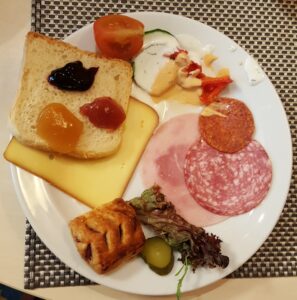 To me, the high point of any day lies in its breakfast being a food lover and all. A hearty one kick-starts the day with much-needed energy to survive hours of walking. As for me, an otherwise controlled eater, I go for it hook, line and sinker when on holiday. Never mind if you find the idea of a controlled eater-cum-foodie baffling. A serving of grapefruit juice and fresh fruits topped with flavoured yoghurt is what I ordinarily start with. Followed by some cold ham and hot sausages.
To me, the high point of any day lies in its breakfast being a food lover and all. A hearty one kick-starts the day with much-needed energy to survive hours of walking. As for me, an otherwise controlled eater, I go for it hook, line and sinker when on holiday. Never mind if you find the idea of a controlled eater-cum-foodie baffling. A serving of grapefruit juice and fresh fruits topped with flavoured yoghurt is what I ordinarily start with. Followed by some cold ham and hot sausages.
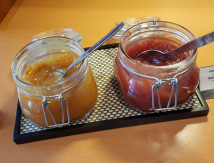
Apricot and plum jam
Eaten with a warm sliced baguette spread generously with frozen butter and fresh apricot jam one day, and plum the next. A Cappucino then completes the breakfast story.
I looked forward to Day 2 in Prague. Having read much of its history of concentration camps, I was naturally eager to get on to the Terezin Concentration Camp, one of the largest in the county. Mind you, I felt like bypassing this sight when I first reached it thinking I’d made a poor choice. For it appeared flat and dreary at the outset. I came to realise later, however, that it was a good thing I didn’t turn back. Good decision.
It is therefore vital to get a useful guide as I did else I may have let this site go by. Mine was of Portugueseorigin equipped with excellent English speaking skills and well-versed in the history of medieval times. Perhaps being of Portuguese origin helped. I came to learn that guides were also available inside the fortress at Terezin. Apparently, some these guides are related to the ghetto’s inmates who survived the Holocaust. The word ‘holocaust‘ originates from the Greek ‘holo‘ (whole) + kaustos (burnt). Couldn’t have been better described than this combination. How I wish I could’ve met the guides related to the inmates of the prison camps if only to learn the inside story but then it would’ve been selfish of me to let them relive their loved ones’ sordid past.
Talking of guides, I have a preference for European locals. In my experience, guides of Asian origin can be a tad too fast, repetitive and prosaic. I had insisted on an English speaking guide from the start and was willing to adjust my dates to get one. So remember this, when booking tours, to specifically request for a tour guide who speaks your preferred language.
If you have visited Prague or have read about its history, you would well know that it was home to the Jews in the early 9th, 10th and 11th centuries. That is why Jewish synagoguesabound in this city. However, their home was not to stay a pleasant one for long at least not until the end of the 12th century. The Jews were an oppressed lot, compelled to live in the ghettos after the Crusades attacked them. The Crusaders enforced baptisms which the Archbishop of Prague couldn’t help stop. Apart from wandering preachers, the Jews were on the receiving end from German peasants as well. The Germans in that day sure seemed to be eager for a fight, especially with the Jews.
Of course, the Czech Jews did have their time in the sun even if it wasn’t for long. If you recall, I’d made a mention of Rudolf II and Rabbi Loew (of the Golem fame) in my last blog post about ghosts. Well, it was under their era in the 16th century that the Jews flourished in what I said was termed as the Golden Age.
The good times, however, was not what I was going to see at Terezin. It was the horrific times which is what the tour was going to highlight. In the 18th century, the Jews came to be imprisoned here by the Nazis who hated them so much that they stopped at nothing to persecute them. The very fortress which was meant to protect was used for the opposite, to inhibit its inmates. It was the exact opposite that the fortress was eventually used for.
I hopped onto a pre-booked coach that took us to Terezin. It houses a massive fortress founded by Emperor Josef II which served as a military garrison but later used as a base for Gestapos and prisoners of World War II.
I availed of a half-day tour which took about an hour to reach Terezin from the city centre. On hindsight, I realised I ought to have made a day trip to be able to cover it all at a less rushed pace. I wasn’t able to keep pace with the entire history of Terezin in half a day, a pity.
The tour was priced @ EUR 40. Some travel tours do not include entrance fees in the package which would necessitate a stop at the entry of Terezin.
As we bundled out of the coach, we expected to see a lifeless town but were surprised to note that it was a fully functional one! In fact, it didn’t look any different from the other town squares except when you ventured inside and assessed its rows of houses.
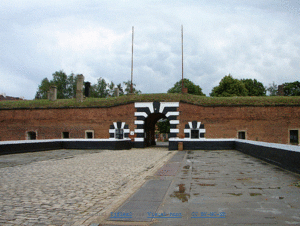
Entrance to Terezin Concentration Camp, Prague
The main fortress built by Josef II as mentioned earlier is located east of the Ohre River. It was after I’d walked inside that it dawned on me that it was a kind of township housed inside a massive walled fortification. It took its name after Josef’s mother, Empress Maria Theresa. Just so that you understand its era, Maria Theresa was the sister-in-law of the famous Marie Antoinette. It was this fortress that was converted to the ghettos during the war. Poor use of a great fortress really.
The small fortress was one which was transformed into a prison run by the German Secret Police. The small fortress is located west of the Ohre river. When did the Gestapos take charge of this fortress? It was in the middle of the 20th century when the Germans invaded the former Czechoslovakia. The prison confined in its thick walls thousands of prisoners from the Second World War. Not all inmates were Czechs, some were Polish and some of other nationalities too. Most were political prisoners.
Horrifying stories are recounted of the brutal treatment of the prisoners by the Gestapos. Of wired walls to which many were electrocuted. Of gas chambers where the unfortunate victims were led into en masse. Of those who were thrown into trenches and shot dead.
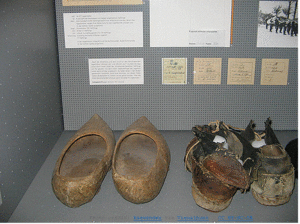 There is a story of how the Jews were made to remove their footwear, some heeled and some otherwise before they were gassed. The piles of shoes still exist in other museums, to prove this shocking fact.
There is a story of how the Jews were made to remove their footwear, some heeled and some otherwise before they were gassed. The piles of shoes still exist in other museums, to prove this shocking fact.
Outside the Small Fortress, there were numbered doors. The one that led to the mortuary was Door No. 18. A place where dead bodies were stored until they were taken to the crematorium to be burned. We couldn’t get inside of course. The door next to this one, Door No. 17 led to a tunnel which in turn led to the execution site. If I thought I never suffered from claustrophobia I was wrong. At the start, I was assured that it was a stretch of fewer than 1,500 feet but every time I thought I had reached the end of the tunnel there came a turn which made it seem endless! Remember to ask to exit through a side door if you happen to go on this tour and be unable to complete the tunnel walk.
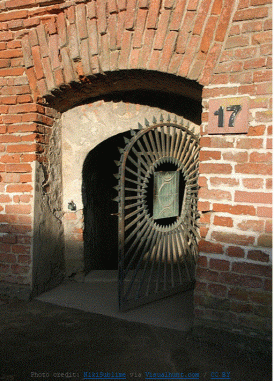
Door No. 17
I found the Ghetto Museum rather engaging. This museum displays exhibits of painful experiences of its inmates, mostly boys. It tells of how they spent day after horrid day inside its cold stone walls. To find their artistic sketches and poems left me speechless! How could art and tragedy go hand in hand, I wondered. Of boys at that, aged between 10 and 15 years! There were paintings and poems about fleas and bugs and a desperate desire to be set free. Pitiable really. I jotted down this verse, one of many written inside the camps.
“The sun has made a veil of gold
So lovely that my body aches.
Above, the heavens shriek with blue
Convinced I’ve smiled by some mistake.
The world’s abloom and seems to smile.
I want to fly but where, how high?
If in barbed wire, things can bloom
Why couldn’t I? I will not die!”
– Michael Flack, 1944
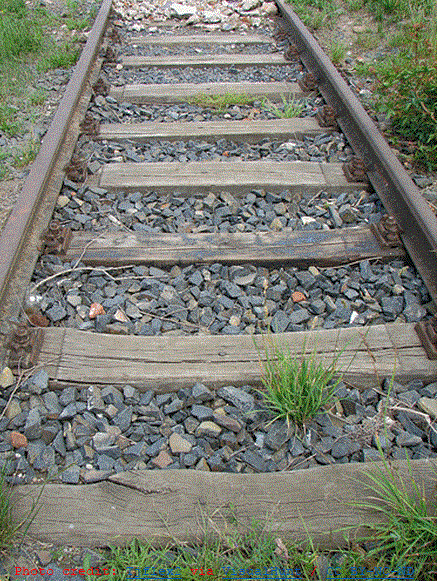
Railway track line
Another section which I couldn’t obviously miss, especially not from my memories from war movies, was the now unused railway trackline built by the prisoners themselves to haul in more prisoners like them only to eventually send them to the gas chambers.
Then came the former Magdeburg Barracks which served as the headquarters of the ghetto’s local government.
And the cells. Cell no. 1 was of particular significance as it was used to imprison Gavrilo Princip, a Serb, who had shot dead Austrian Archduke Franz Ferdinand. Why did the Serb assassinate the Archduke? Because it was the mission of the Yugoslavian organisation that he belonged to, to liberate Bosnia from the Austro-Hungarian rule. Little did Princip know then that his act would unleash something as big as the World War I. From different accounts I understood that Princip was regarded as a terrorist as well as a hero, which one is true is hard to decide given the circumstances of that era. A fact it was that he succumbed to tuberculosis in the very same Cell No. 1.
Despite the uncanny calm that hugs the place now, I still felt goose bumps as it was impossible to not visualise the tragedy of the victims housed here. Of their pain, humiliation, gloom.
At the end of this five-hour tour, the heart felt leaden. The brow was furrowed, and so touching was the experience that I nearly cried.
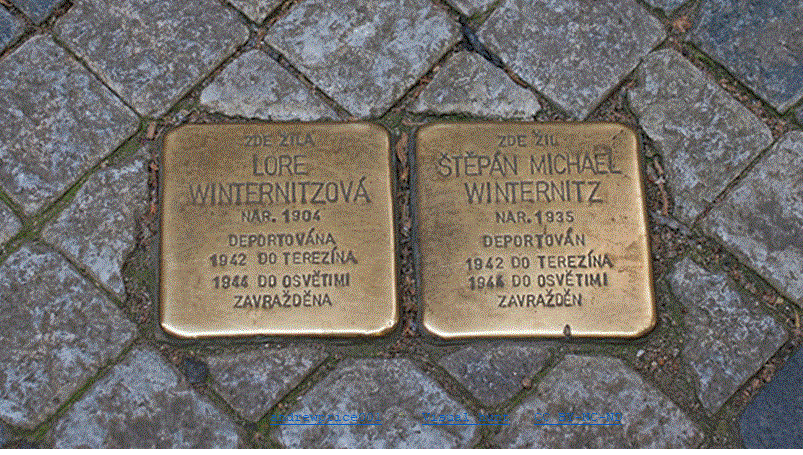
Plaques
It was but natural to pay homage to the victims of the Terezin Memorial. The numerous plaques were proof enough of the large numbers of lives lost. A unique site but one recommended for those interested in the history of Pragueor World War II. Not one for the faint-hearted or the typically touristy.
Note that this doesn’t feature among top travel sights, but it would intrigue those genuinely interested in history.
A little garden,
Fragrant and full of roses.
The path is narrow
And a little boy walks along it.
A little boy, a sweet boy,
Like that growing blossom.
When the blossom comes to bloom,
The little boy will be no more.
-Franta Bass
(Reference: http://www.nonduality.com/terezin.htm)
At the end of the tour, I detoured towards the Prague Castle to check it out by day and to shrug off the gloom from the concentration camp visit.
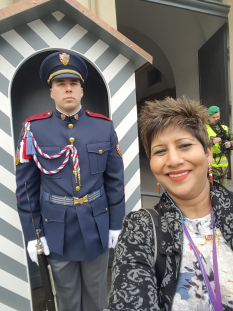
Selfie with the changing guard
The day view was even more spectacular, having got to see the changing guards and their strikingly handsome faces and even pose with them. As long as you didn’t touch or kiss them, I understood they wouldn’t hurt you 🙂
Do look out for the next travel article which describes how I lived like a local in this beautiful city of Prague, Czech Republic.



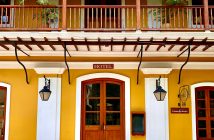
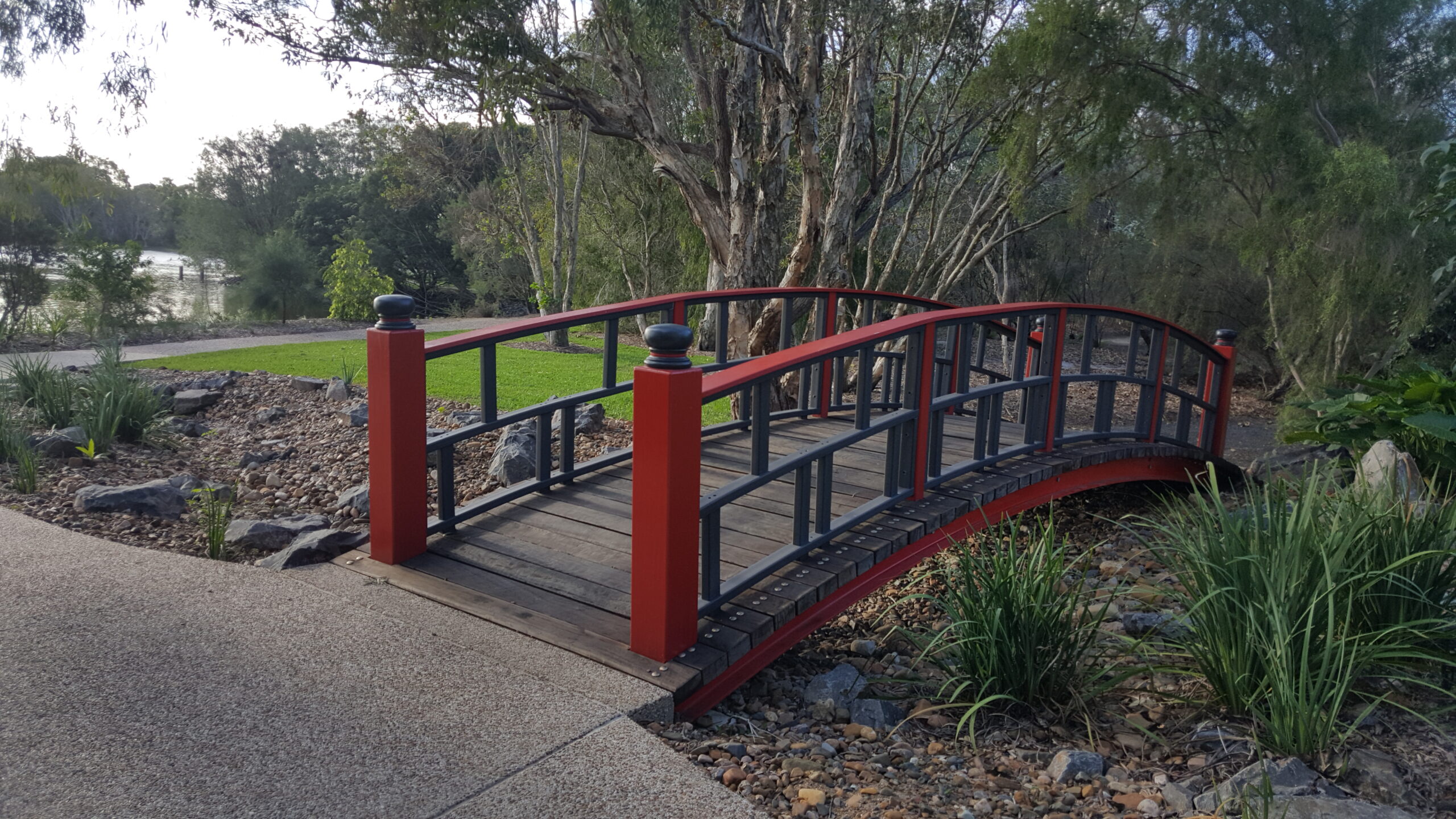
5 Comments
So informative. the word holocaust makes so much sense to me now.
Carmelita, thanks for enlightening me on the meaning of the word ‘Holocaust’.
A very vivid description of the Terezin Camp. Can almost picture the tragic experiences, gory war crimes and horrific treatment of Jews. A sad indictment on our history’s past.
Intriguing post. I’ve been pondering about this issue, so a debt of appreciation is in order for posting.
Cool post. It ‘s extremely exceptionally decent and Useful post.
Thanks!
Best regards,
Thompson Henneberg
Am glad it was of use to you. Thanks for taking the trouble to comment.